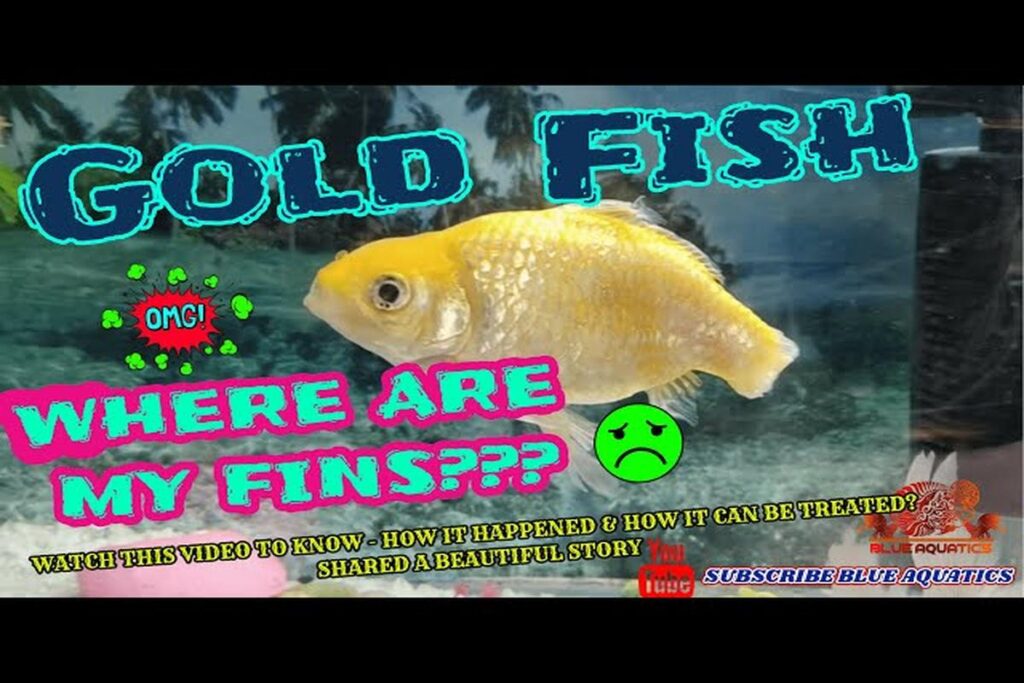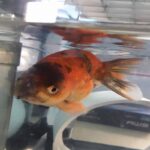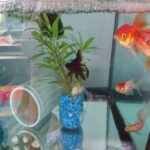Fin rot is most often caused by a dirty tank and poor water quality, poor care, or exposure to other fish who may have contagious diseases. Fin rot can also be caused by injuries such as mishandling of fish or nipping and bullying behaviours from other tank mates .
How To Fix Fin Rot In Goldfish?
We recommend using abroad-spectrum antibiotic known as erythromycin that is effective against fin rot. If your fish has also developed asecondary fungal infection, methylene blue is an appropriate antifungal treatment. Keep your fish’s environment very clean and comfortable to ensure aquick recovery process.
What Is The Main Cause Of Fin Rot?
Fin and Tail Rot is one of the most preventable diseases in aquarium fish. The root cause of Fin Rot is always poor water conditions, but fish stress is also acontributing factor. When fish are handled, moved, subjected to overcrowding or housed with more aggressive fish, they are more susceptible to Fin and Tail Rot.
What Is The Best Cure For Fin Rot?
Treatment. Treat with asuitable treatment such as phenoxyethanol, malachite green, methylene blue or other proprietary agent (most seem to prefer aquarium salt; however, it is important to make sure the product is for freshwater, not saltwater, fish). Find out the pH and correct it if necessary.
Can Salt Cure Fin Rot?
Our advice for treating mild fin rot Use Aquarium Salt by API (view it here on Amazon). 1. Lower the temperature of the aquarium to about 75°F. This will delay the growth of bacteria causing the fin rot.
Can Fin Rot Heal On Its Own?
If caught early, fin rot can be treated, and your fish’s fins will slowly grow back with care and time. In more serious cases where the fin rot has reached the body of the fish, the tissue will not regenerate.
How Long Does It Take To Cure Fin Rot?
This depends on how bad the problem is to start with. By using King British Fin Rot & Fungus Control there should be an improvement in 4-5 days. Due to fish having open wounds it is very important to keep water quality pristine, to prevent secondary infection taking place.
Do You Need Antibiotics For Fin Rot?
Beginning with white margin of fins, when all fins are erroded, tail turns red. Treatments: Use of phenoxethol, acriflavine and antibiotics such as kanamycin and chloramphenicol (Chloromycetin).
Is Fin Rot Contagious To Humans?
The good news is that despite being bacterial in nature this condition does not appear to be contagious.
What Parasite Causes Fin Rot?
Flavobacterium columnare, previously known as Flexibacter columnaris, is agram-negative, orange-to-yellow pigmented, colony-forming bacteria and the etiologic agent of columnaris disease (fin rot, cotton-wool mouth). Columnaris disease affects many species of fish, both wild and captive.
How Do I Tell If My Fish Has Fin Rot?
The first signs of fin rot are usually frayed or ragged fins, which may appear white or translucent at the edges. As the infection progresses, the fins may become shorter and more ragged, and the fish may develop redness or inflammation around the affected area.
When To Use Aquarium Salt?
Asalt bath is ideal when treating an entire tank for the prevention of nitrite poisoning or reduction of stress. For the salt bath stress treatment, measure out one teaspoon of salt for each gallon of water in the tank (0.1% salinity).
How Long Does It Take For A Goldfish Tail To Grow Back?
If alarge portion of the caudal fin was affected, requiring most of it to be removed, it can take up to ayear or more for the tail to grow back. If only the trailing edges were affected repair will be rapid.
How Do You Treat Fin Rot In Goldfish Naturally?
Untreated, fin rot progresses to infective levels and is fatal.The first step you should take is isolating affected fish. Each fish should have their own separate separate quarantine tank. … Clean the original tank. Perform apartial water change of about 25-30% to improve water quality. … Adjust Water Parameters. Ensure.
Can You Put Salt In A Goldfish Tank?
Pond or aquarium salt is one of the best overall treatments for most freshwater fish, especially koi and goldfish. It is anatural and safe way to promote fish health by reducing stress, improving gill function and promoting thickening of the mucus coat.
Will A Damaged Fin Grow Back?
Flexi Says: Yes, fish fins can regrow after being nipped or damaged, as long as the damage isn’t too severe and the fish’s overall health is good. However, the regrowth process can take time and the new fin may not look exactly like the original.
What Causes Fin Rot In Goldfish?
It forms as aresult of a weak condition of afish permitting the bacteria Pseudomonas or Aeromonas to strike. It occurs especially to koi and goldfish. It also occurs at other pond fish, however, they are less sensitive to it.
Can Fin Rot Be Cured On Its Own?
Mild to moderate tail rot, which is typically due to agram negative bacterial infection, can often heal without the use of antibiotics, and frequently, without anything other than water being used. It all depends on how bad the infection is.
How To Use Erythromycin For Fin Rot?
For each 10 gallons of water, empty one packet directly into aquarium. Repeat dose after 24 hours. Wait another 24 hours then change 25% of the aquarium water. Repeat this treatment for asecond time, for atotal of 4 doses .
Why Are My Goldfish Turning White?
Some fish turn white as they age and some cycle through different colors including black, orange, silver and white depending on how old they are plus other factors such as light, food, levels in the water of ammonia, nitrites, nitrates and changes in tank ph.
How Do You Know If Fin Rot Is Healing?
This means and appropriate environment, with good water quality, and ahealthy diet. Once the localized infection is cleared, your fish’s fin will start to regrow. You may see clear or white tissue around the tail.
Can Tetracycline Cure Fin Rot?
This disease can also be treated with awide variety of anti-microbial medicines, such as Tetracycline (Dose: 3-4 gm/100 lfor 2-3 days, Water change after treatment), Neomycine(Dose: 2-4 gm/100 lfor 3 days, Do a 30-50% water change afterwards), Nitrofurazone (Dose: 250-500 mg/100 lfor 3 days.
What Does Tetracycline Treat In Fish?
Tetracycline Hydrochloride is anaturally occurring Tetracycline used in the treatment of bacterial infections that are generally gram-positive such as Streptococcus and SOME gram-negative infections in fish. It interferes with the production of proteins that the bacteria need to multiply and divide (bacteriostatic).
How Do You Treat Fin Rot Naturally?
how to cure fin rot without medicationdoing large water changes daily, for 7 days and see if his tail grows back.removing the fish immediately AND doing large water changes daily, for 7 days.using the meds ibought (API fin and body cure)buying different meds that one of you guys could recommend.
Can A Dirty Fish Tank Make You Sick?
You don’t have to touch afish to get sick from the germs it can carry. Fish tanks, equipment, and tank water can be contaminated with germs. The best way to prevent illness from fish and their environment is to wash your hands often.
How To Cure Fish Ich Naturally?
Elevated temperature causes the death of all stages of the parasite. Another natural method is to increase the salinity of the aquarium water by adding aquarium salt. There should be no more than 10–15 grams of salt per 10 liters of water. You should change the salt water after 3–4 days to freshwater.
How To Cure Goldfish Fin Rot?
We recommend using abroad-spectrum antibiotic known as erythromycin that is effective against fin rot. If your fish has also developed asecondary fungal infection, methylene blue is an appropriate antifungal treatment. Keep your fish’s environment very clean and comfortable to ensure aquick recovery process.
How Does Fin Rot Start?
Fin and Tail Rot is always environmental in nature and brought on by poor water conditions. Fish stress is also acontributing factor in Fin and Tail Rot. When fish are handled, moved, subjected to overcrowding or housed with more aggressive fish, they are more susceptible to Fin and Tail Rot.
How Do I Tell If My Fish Has A Parasite?
Look to see if your fish has cloudy eyes, white patches or is gasping for air, rubbing on objects and is listless. Fish lice could cause these symptoms. Internal parasites will cause loss of appetite, listlessness and erratic swimming. Note redness, irritation and/or threadlike worms coming from the fish’s tail area.



